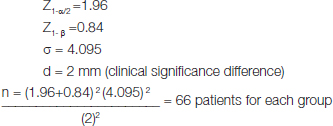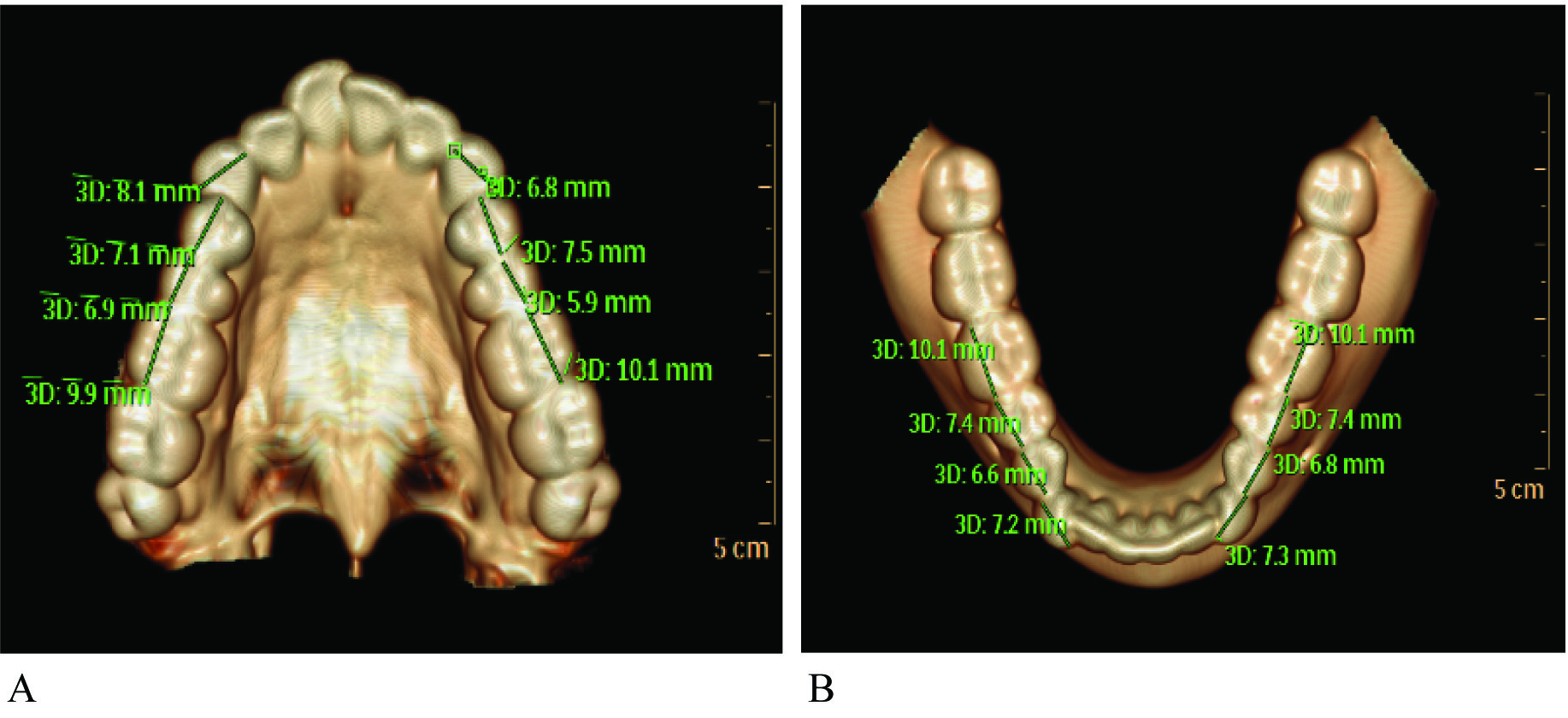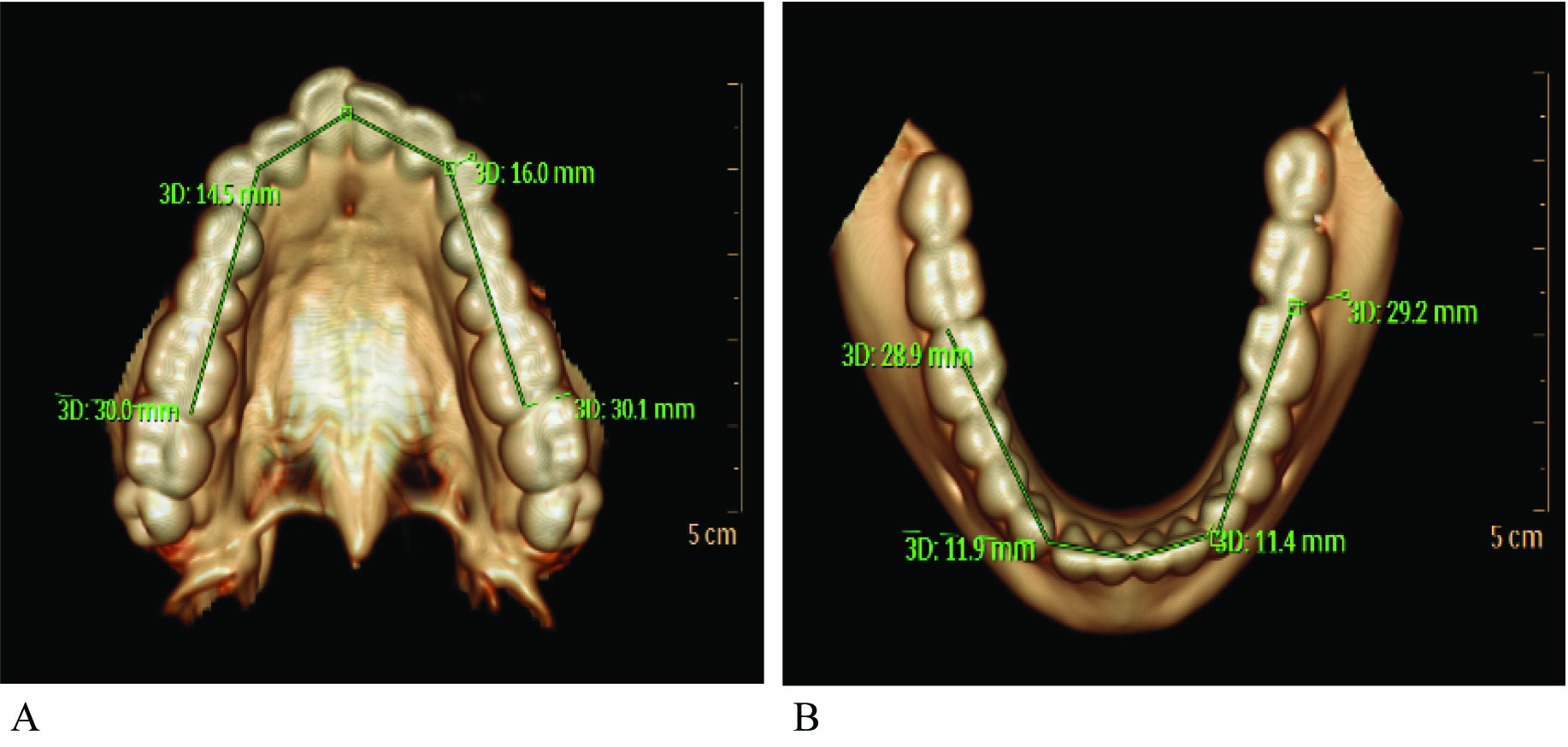One of the greatest writer in Spanish language and one of the world’s greatest novelists Miguel de Cervantes Saavedra, said that “Every tooth in a man’s head is more valuable than a diamond”. The statement is quite true because teeth are the most enriching or most beautifying segment of the face and yearning for teeth, which give in any event the presence of perfection. Any irregularity or imperfection such as dental crowding in the teeth can change one’s beauty, which is undesirable. In this regard the orthodontic treatment plays an important role. Dental crowding, also referred as swarming, can be characterised as an inconsistency between tooth size and arch dimension which results in malocclusion. Dental crowding occurs because of the absence of coordination between the tooth size and arch dimensions and results in positioning the teeth on each other. When there is shortage of space for the arrangement of teeth in the dental arch, teeth experience the ill effects of rotation dislocated eruption etc., [1]. Crowded teeth are very difficult to clean properly and thoroughly, which results in poor mouth cleanliness and further dental and medical problems. Mesiodistal crown Diameter (MD) which is also known as tooth size, tooth crown size, or tooth width, in human populations has been used in various studies due to its role in human advancement and biological problems as well in forensic investigations and clinical dentistry. Various factors are responsible for dental crowding, including the effect of the environmental as well as genetic factors, on dental arch dimensions such as arch width, arch length, arch perimeter etc. Mesiodistal tooth width is additionally influenced by hereditary qualities, race, and sex [1]. However, the reasons for overcrowding have not completely been comprehended till now [2]. The factors that may contribute to teeth crowding are broad teeth, bony bases and also the developmental pattern towards a decreased facial skeletal size without a relating diminish in tooth size [3]. Crowding and spacing can be depicted as a declaration of an adjusted proportion between tooth size and dental arch dimensions, both of which are affected by inherent and ecological components [4]. The arrangement of teeth inside the upper and lower arch, for the most part, relies on the relationship between tooth size and jaw size. Any irregularity amongst dental parameters, for example, tooth size and arch dimension have been studied by several investigators [5]. The advanced medical imaging like Computed Tomography (CT) scan, provides cross-sectional images of internal body structures [6]. A 3D CT can generate the volume data with high-quality images, permits estimation or measurement of structures to be made on a picture helping analysis and diagnosis [7]. Multi-Detector Computed Tomography (MDCT) can give more geometric accuracy than other devices such as cone beam computed tomography and Vernier’s calliper [2]. Measurement of orthodontic outcomes only in the sagittal view, as recorded in 2D lateral cephalograms or profile photographs may not be sufficiently informative, but the 3D CT gives better frontal and three-quarter profile data for diagnosis, treatment planning, and measurement purposes [8]. Therefore, the present study was conducted to evaluate the dental crowding in relation to the mesiodistal crown widths and arch dimensions and also to determine the differences of dental crowding among males and females in Southern Indian population.
Materials and Methods
The present cross-sectional study was conducted in Department of Radiodiagnosis and Imaging, Kasturba Hospital, Manipal, Karnataka, India. The study was conducted from November 2015 to March 2017.
Sample size was calculated by formula:

(For 95% confidence interval)

The study received ethical clearance from Kasturba Hospital, Manipal. The patients referred for CT scan to the Department of Radiodiagnosis at Kasturba Hospital, were included in the study. The subjects were selected according to the inclusion criteria, with age group of 18-35 years and all teeth present in both maxillary and mandibular arches, excluding the third molars. Patients with trauma/fracture of maxilla or mandible, retained deciduous teeth and fixed orthodontic appliance, were excluded. Informed consent was taken from the patients before the procedure. By using purposive sampling method, a total of 132 subjects were selected. The sample size was then categorised into four sets, a set of 33 males with crowding, a set of 33 males without crowding or non-crowding, a set of 33 females with crowing and a set of 33 females without crowding or non-crowding. Before scanning, a small 2 mm teflon-block was put in the patient’s mouth as a bite block for little separation of both the jaws. The scan was done using the dental protocol (Kvp= 120, mAs= 80, filter= Bone (D), and FOV = 250mm). Volume rendering post processed method was used with dental software in Philips Extended Work Station to convert 2D image to 3D. The method of calculating and measuring the parameters was followed according to method of Poosti M and Jalali T [9]. The following parameters from the canine region to first molar region, were measured: collective mesiodistal tooth widths of four teeth for both quadrants of both the jaws, the canine, first and second premolar and first molar, and the total arch perimeter were measured. Collective mesiodistal tooth width was measured by adding the mesiodistal widths of all the teeth in each quadrant of each jaw [Table/Fig-1]. For arch perimeter measurement, the dental arch was divided into a number of segments which were almost straight and in one line from permanent first molar. The arch perimeter was the sum of the sizes of the mentioned segmemts in each arch [Table/Fig-2].
Mesiodistal crown width : a) maxillary jaw; b) mandibular jaw.

Arch perimeter : a) maxillary jaw; b) mandibular jaw.

Statistical Analysis
The data were statistically analysed using Social Package of Statistical Science software (SPSS, version 19.0).
Mean, standard deviation, the statistical significance of mesiodistal crown width and arch perimeter of both jaws for each of the groups were assessed. ‘Multiple Logistic Regression’ test was used to analyse the information and the level of significance was set at 0.05.
Results
Statistical analysis revealed that, overall (male and female), mesiodistal crown widths and arch perimeter were statistically significant for crowding in both mandibular and maxillary jaw [Table/Fig-3]. However, when separately analysed, it revealed that in males, both the mesiodistal crown widths and arch perimeter were statistically significant in both jaws [Table/Fig-4] and in females both were statistically not significant for both mandibular and maxillary jaws [Table/Fig-5].
Statistical analysis in overall participants (both males and females).
| Parameters | Overall |
|---|
| Mean | ±SD | 95% CI | p-value |
|---|
| Crowded | Non-crowded | Mean Group Diff | Crowded | Non-crowded |
|---|
| MD Crown Width Mandibular | 67.44 | 63.49 | 3.95 | 6.35 | 4.76 | 1.15,1.144 | 0.001 |
| AP Mandibular | 105.24 | 106.34 | 1.1 | 5.27 | 5.95 | 0.75,0.93 | 0.001 |
| MD Crown Width Maxillary | 66.14 | 65.60 | 0.54 | 4.78 | 5.46 | 1.02,1.26 | 0.016 |
| AP Maxillary | 106.45 | 108.93 | 2.48 | 4.26 | 5.72 | 0.75,0.93 | 0.002 |
SD - Standard Deviation
CI - Confidence Interval
p-value - Probability value
MD - Mesio-distal
AP - Arch Perimeter
Statistical analysis in males.
| Parameters | Mean | ±SD | 95% CI | p-value |
|---|
| Crowded | Non-crowded | Mean Group Diff | Crowded | Non-crowded |
|---|
| MD Crown Width Mandibular | 71.77 | 65.13 | 6.64 | 5.17 | 5.18 | 1.29,2.24 | 0.001 |
| AP Mandibular | 106.74 | 108.82 | 2.08 | 4.29 | 5.68 | 0.49,0.85 | 0.002 |
| MD Crown Width Maxillary | 69.18 | 67.89 | 1.29 | 4.77 | 5.55 | 1.13,1.73 | 0.002 |
| AP Maxillary | 107.19 | 111.80 | 4.68 | 4.45 | 5.19 | 0.45,0.8 | 0.001 |
SD – Standard Deviation
CI - Confidences Interval
p-value - Probability value
MD - Mesio-Distal
AP - Arch Perimeter
Statistical analysis in females.
| Parameters | Mean | ±SD | 95% CI | p-value |
|---|
| Crowded | Non-crowded | Mean Group Diff | Crowded | Non-crowded |
|---|
| MD Crown Width Mandibular | 62.21 | 62.00 | 0.21 | 2.56 | 3.81 | 0.87, 1.2 | 0.7 |
| AP Mandibular | 103.43 | 104.06 | 0.63 | 5.88 | 5.29 | 6.87,1.08 | 0.06 |
| MD Crown Width Maxillary | 64.06 | 62.86 | 1.2 | 3.58 | 3.90 | 0.9, 1.2 | 0.2 |
| AP Maxillary | 105.95 | 105.50 | 0.45 | 4.14 | 4.28 | 0.8, 1.1 | 0.9 |
SD – Standard Deviation
CI - Confidences Interval
p-value - Probability value
MD - Mesio-distal
AP - Arch Perimeter
Tooth Size
In mandibular jaw, the overall mean difference of mesiodistal crown width between the crowded and non-crowded group was found to be 3.95 [Table/Fig-3]. When compared separately, in males it was found to be 6.64 [Table/Fig-4] and in females to be 0.21 [Table/Fig-5]. In maxillary jaw the overall mean difference was 0.54 [Table/Fig-3] 1.29 in males [Table/Fig-4] and 1.2 in females [Table/Fig-5]. Tooth size was found to be bigger in crowded group than non-crowded group.
Arch Dimension
In mandibular jaw, the overall mean difference of arch perimeter between the crowded and non-crowded group was found to be 1.1 [Table/Fig-3]. When compared separately it was found to be 2.08 in males [Table/Fig-4] and 0.63 in females [Table/Fig-5]. In maxillary jaw the mean overall difference was 2.48 [Table/Fig-3], 4.68 in males [Table/Fig-4] and 0.45 in females [Table/Fig-5]. Arch perimeter was found to be smaller in crowded group than non-crowded group.
Discussion
For an appropriate treatment strategy in orthodontic practice, it is necessary to know the tooth size-arch size relationship with crowding. Identifying the aetiology and the most appropriate cause of the crowding, is also important. The basic reason for crowding has been surveyed by several investigators, yet the outcomes acquired have remained debatable which has separated the opinion of the investigators. The relation between crowded dentition and several dental variables, for example, tooth size and arch dimensions have been examined broadly by several authors [1-5,10-14]. Several studies showed that the nature and the degree of crowding differ among people of various ethnic groups and races. Different investigators have measured different parameters. In the present study we measured the cumulative mesiodistal crown width of first molar, second premolar, first premolar and canine of both the sides of both jaws. The present study focused on investigating the contribution of mesiodistal crown widths and arch perimeter to dental crowding and non-crowding. The result of the present study showed that the mesiodistal crown width and arch perimeter, both were significant for crowding, altogether and in males for both of the jaws, but they were not statistically significant in females for crowding. In males, the tooth size was comparatively larger in the crowded group than the non-crowded group, and the arch perimeter was small in the crowded group than the non-crowded group. According to Sadeghian S et al., a study on dental cast measuring different parameters by using a caliper, found that the tooth size (p=0.02) and arch perimeter (p=0.018) were significant in lower mandibular jaw, the crowded group had smaller arch dimension and larger tooth size [1]. However, in the maxillary jaw, the sum of mesiodistal width was not statistically significant (p=0.13), only the arch perimeter (p=0.023) was statistically significant and played an important role in crowding [1]. In the present study, we found the same result for the mandibular jaw; however, for maxillary jaw, partially dissimilar results were found. We found that both parameters were significant in maxillary jaw also; whereas, the earlier study found difference only in arch perimeter. The results found by other two studies were also similar [3,10]. They found that tooth size is not responsible for crowding, only the arch perimeter is responsible. According to Golwalkar AS et al., the difference between the mean values of collective mesiodistal teeth widths between crowded and non-crowded groups was 1.42 and 1.44 for male maxillary and mandibular jaws respectively and in females, it was 1.37 and 1.38 [10]. However, they found a significant difference in arch dimensions (p< 0.01), the arch dimensions were smaller in the crowded group similar to the present study, but this result does not match with the result found by Abdul-Qadir MY [4], Poosti M et al., and Bora M et al., [9,13]. Their findings stated that the individual tooth size, collective tooth size, and arch dimensions are statistically significant for dental crowding. They found that the tooth size is larger in the crowded group than the non-crowded group, and the crowded group has a smaller arch width and arch perimeter than the non-crowded group. These results are similar to the present study. According to the result found by Hussain SS et al., the tooth size is statistically significant for crowding among females [2]. For arch dimensions, they measured the arch width which they found statistically significant in both the gender; the crowding group had smaller arch dimensions. In the present study, for arch dimension, we measured the arch perimeter which was found to be statistically significant in males but not significant in females. They stated that the mesiodistal crown widths of teeth and arch perimeter vary from one population to another. In a study conducted by Arif AN et al., the arch length was a related factor for dental crowding (p>0.01) and not the mesiodistal tooth diameter [12]. The difference in the mean values for the sum of mesiodistal tooth diameters between non-crowded and the crowded group was found to be 1.4186 mm which was not statistically significant (p=0.063). The study was done over plaster casts and an electronic Vernier’s caliper was used for measurement. So, these findings are different from our study where we found that both the parameters were responsible for dental crowding. It may be obseved that the results of the present study are similar to some authors and also at the same time it disagrees with the results of the study done by other authors. The difference in the finding may be due to the number of subjects, sampling technique, selection criteria and the method of measuring the parameters used by different investigators in their studies. The difference in the findings may also be influenced by the geographical factors. The primary reason for crowding has been evaluated by several investigators; however, the result obtained is still controversial and results in a divided opinion of the authors.
Limitation
The parameters such as mesiodistal crown widths and arch perimeter were used for evaluating the cause of dental crowding, but there may be other parameters which contribute to dental crowding which was not taken into account in the present study.
Conclusion
These findings led to the conclusion that overall and in males, the mesiodistal crown width and arch dimensions both contribute to dental crowding, the crowded dentition has larger mesiodistal tooth size and smaller arch dimensions, but in females both the factors were not responsible for crowding in Southern Indian population. Clinical application of the results is imperative in treatment planning for the patients with dental crowding.
SD - Standard DeviationCI - Confidence Intervalp-value - Probability valueMD - Mesio-distalAP - Arch PerimeterSD – Standard DeviationCI - Confidences Intervalp-value - Probability valueMD - Mesio-DistalAP - Arch PerimeterSD – Standard DeviationCI - Confidences Intervalp-value - Probability valueMD - Mesio-distalAP - Arch Perimeter